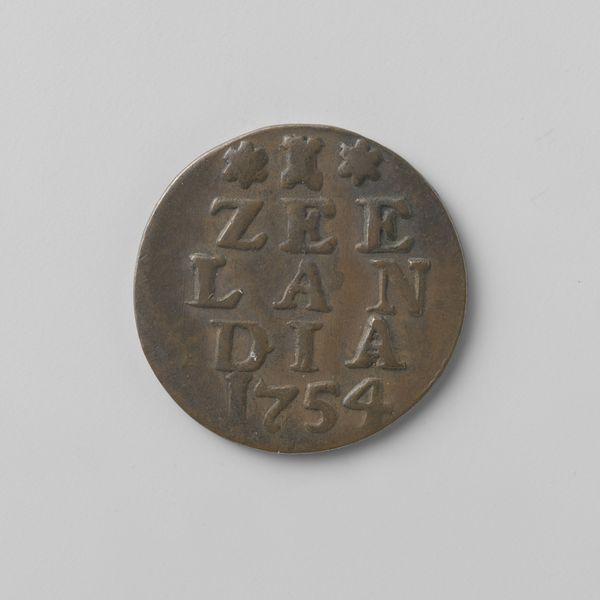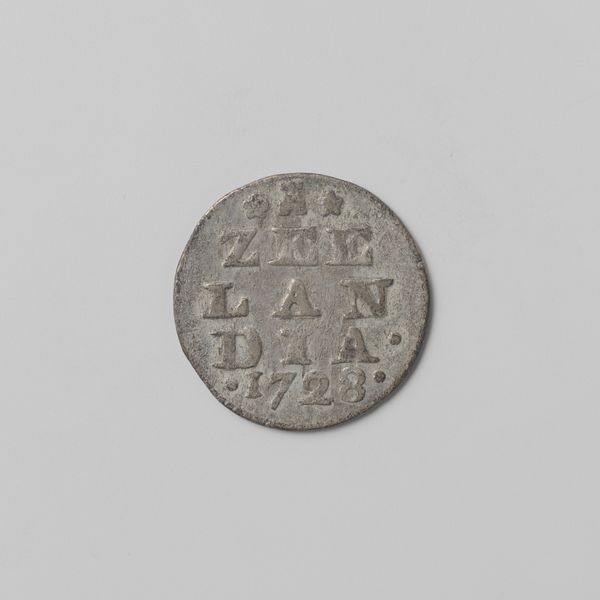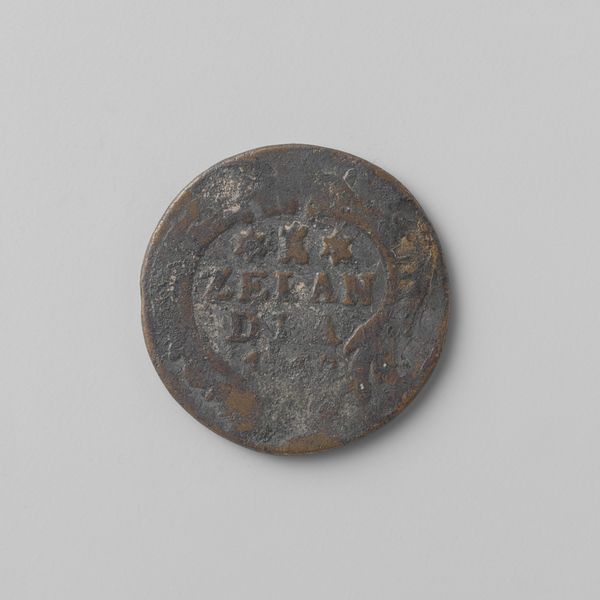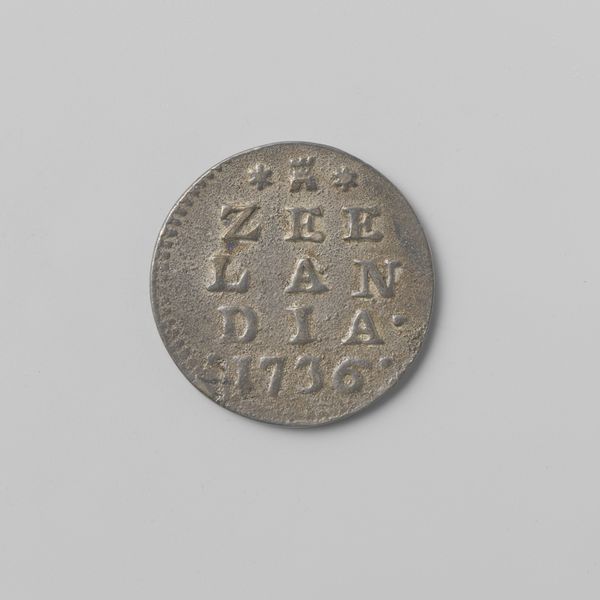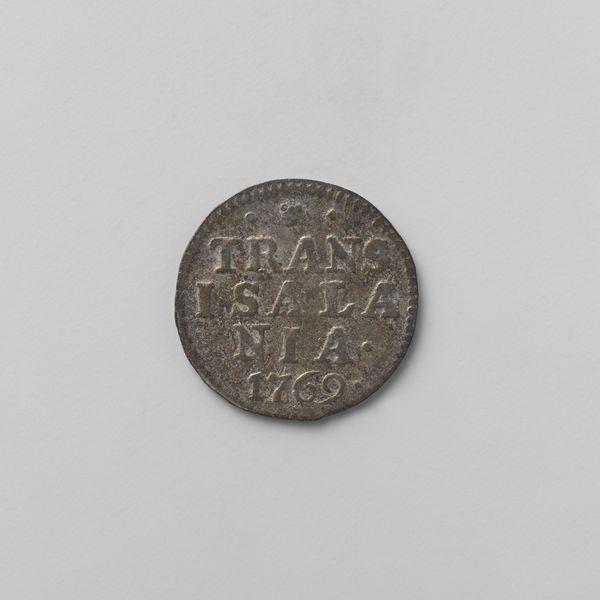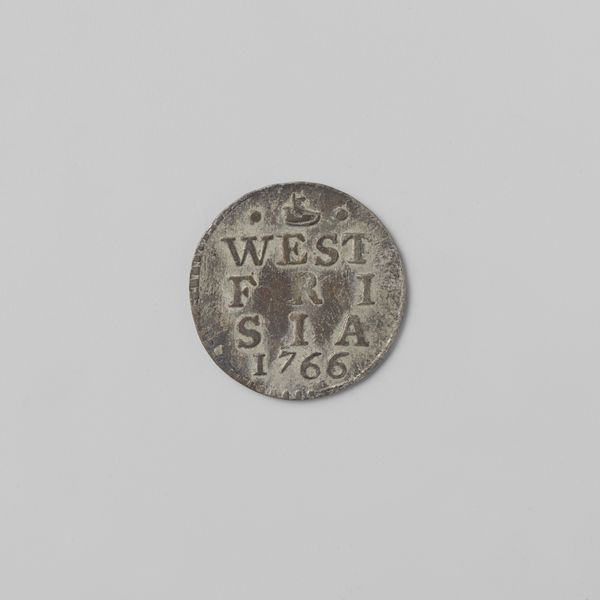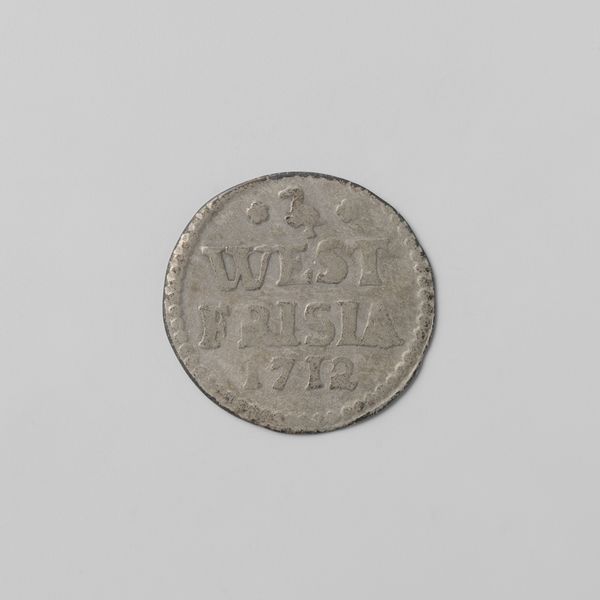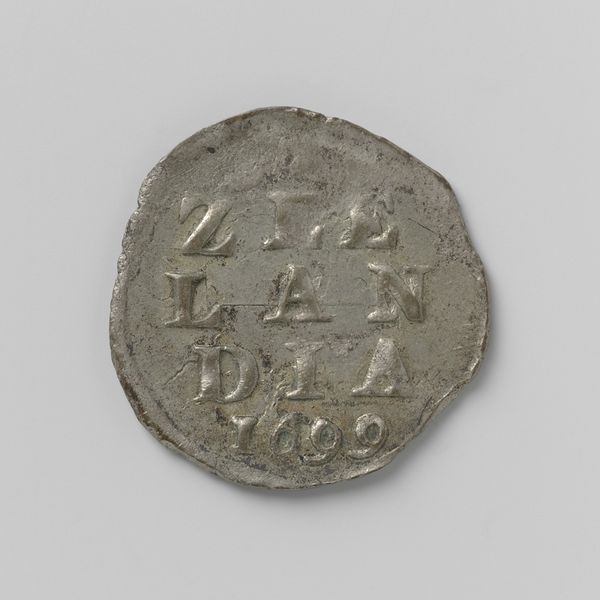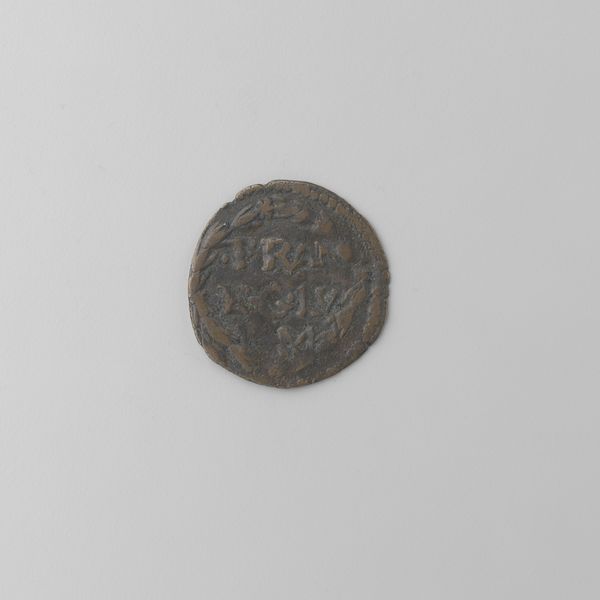
silver, print, metal
#
silver
# print
#
metal
#
ancient-mediterranean
Dimensions: diameter 1.7 cm, weight 0.74 gr
Copyright: Rijks Museum: Open Domain
Curator: This is a Zeeuwse Stuiver, dating back to 1762, a coin from the province of Zeeland. Editor: Well, first impressions... it looks worn, doesn't it? Like it's been passed through countless hands. A tiny piece of metal carrying a lot of history. You can feel the materiality just looking at it, the way the silver has aged. Curator: Absolutely. These stuivers played a significant role in the economic landscape of the Dutch Republic. They were more than mere currency; they were symbols of regional identity, power, and governance in a time of immense global trade and naval power. Editor: The design itself seems rather simple. You have "Zeelandia" arranged rather symmetrically, a crown at the top... was this stamped by hand, or some early machine press? Curator: Mass production had started at this point, although the quality control could be somewhat erratic. The distribution of currency was central to the workings of global trade routes in which The Republic was a key player. Think of what it would have been used for. This might be change for a barrel of herring or some exotic spice arriving at the port. Editor: Exactly! We should look at it beyond just currency. This one coin could have represented a day's wages for a laborer, the price of bread for a family... It's tied to the daily life and labor of the time. Silver also wasn’t pulled out of thin air; its procurement from faraway mines likely involved intense extraction labor as well. Curator: And consider the socio-political statement too. Displaying "Zeelandia," it served to constantly reaffirm the province's identity within the complex political structure of the Dutch Republic. This was an era of intense negotiation among provinces, always on the cusp of unity or fracture. Editor: That little crown speaks volumes, doesn't it? Even in a relatively "democratic" republic, there were potent symbols of inherited authority at play. Its use might not mean that the Zeeland province itself viewed itself as autonomous with respect to the Dutch Republic, but as something different and distinct within. Curator: Precisely. What appears mundane offers remarkable insights. Currency provides a tangible link between macro-historical movements and everyday realities. Editor: Looking closely at it makes us confront how something that feels so small, and perhaps insignificant to us now, underpinned monumental shifts in economics and colonial administration, something made, used, exchanged and lost, yet enduring. Curator: Yes, a little key to understanding a bigger world!
Comments
No comments
Be the first to comment and join the conversation on the ultimate creative platform.


